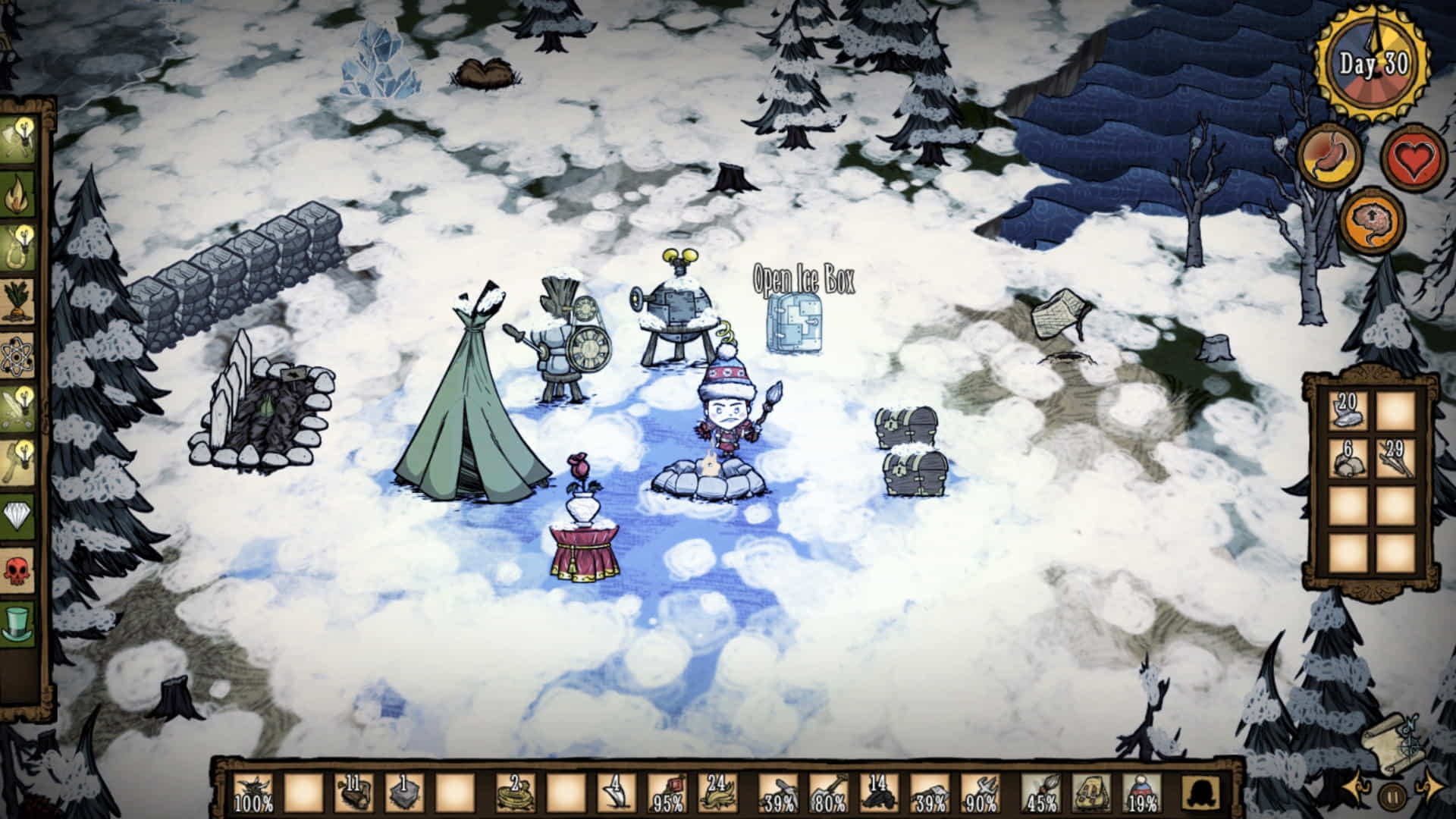[PC Game] Don’t Starve
Don’t Starve is a survival video game developed by the Canadian indie video game developer Klei Entertainment. The game was initially released for Microsoft Windows, OS X, and Linux on April 23, 2013. A PlayStation 4 port, renamed Don’t Starve: Giant Edition, became available the following year (with PlayStation Vita and PlayStation 3 versions released on September 2014 and June 2015 respectively, and an Xbox One version released in August 2015). Don’t Starve for iOS, renamed Don’t Starve: Pocket Edition was released on July 9, 2015. An Android version was released on October 20, 2016. Downloadable content titled Reign of Giants was released on April 30, 2014, and a multiplayer expansion called Don’t Starve Together became free for existing users on June 3, 2015. On Steam, this game is able to be purchased with a free copy for a friend. A Nintendo Switch port came out on April 12, 2018.
The game follows a scientist named Wilson who finds himself in a dark, dreary world and must survive as long as possible. To this end, the player must keep Wilson healthy, fed, and mentally stable as he avoids a variety of surreal and supernatural enemies that will try to kill and devour him. The game’s Adventure mode adds depth to the sparse plot and pits Wilson against the game’s antagonist, Maxwell.
Don’t Starve was Klei’s first foray into the survival genre. Conceived during the height of a game industry trend of dropping players into a world with few instructions and a goal of survival, the game was influenced by Minecraft, which spearheaded this trend, as well as by filmmaker Tim Burton. The game received positive reviews from critics, commended for its original art style, music, and variety of ways for the player to die, although its high level of difficulty and implementation of permanent death were less warmly received.

Don’t Starve is an action-adventure game with a randomly generated open world and elements of survival and roguelike gameplay. Combat is handled by pointing and clicking with the mouse, while other activities are controlled by the keyboard, or using the inbuilt gamepad support to play using a controller, giving it a console-like gameplay feel. The goal is to survive as long as possible, and a count of the number of days the player has survived is shown onscreen. The game keeps few records of player progress besides the total number of experience points and the playable characters unlocked. Wilson is the default playable character, unlocked upon purchase of the game, but the next character, Willow, can be unlocked with 160 experience points. Woodie, the last character unlockable with experience, requires the game’s limit of 1,600. The player earns 20 experience points each in-game day and receives them after dying. As is common among roguelikes, death is permanent, barring the use of several rare or expensive items like the Meat Effigy, TouchStone, and Life-Giving Amulet.
The game relies on a day/night cycle that causes meaningful fluctuations in gameplay style. During the day, the player spends most of their time exploring the world: gathering food, firewood, and other resources, discovering crafting recipes to combine available items, and avoiding enemies. With nightfall comes dangerous monsters and an invisible menace, Charlie, who attacks the player when the screen is dark. A player must have a light source or night vision to prevent Charlie from attacking. Crafting from recipes allows the player to build shelter, weapons, and tools like axes. Players can forage and farm plants as well as hunt animals for sustenance, with several characters having dietary perks or restrictions. Food can spoil, however, so the player cannot keep it for too long. Eating spoiled food results in a loss of health, sanity, and an increase in hunger. Each in-game day takes 8 minutes of real time.
Death can occur in a variety of ways. The player has three gauges displayed on the game’s head-up display, which respectively track hunger, health, and sanity. Hunger worsens by default, being replenished with food. Sanity decreases during the dusk and night or as a result of specific unpleasant actions, such as robbing graves or fighting monsters; it can be replenished through mentally stimulating activities, such as sleeping, picking flowers, and wearing fashionable clothing. When hunger gets too low, it begins to chip away at health, which will eventually result in the player’s death. A large variety of creatures can attack the player, including giant one-eyed birds, tree monsters, tentacles whose owners are not shown, and even small, weak frogs that will nonetheless try to accost the player and steal from them. Additionally, at low enough sanity, figments of the character’s imagination become corporeal and able to attack the player. Some creatures, such as pig-like creatures often found in tribes, begin as neutral to the player (excluding the Reign of Giants character Webber), but the player’s actions may lead them to be allies or hostile foes.
The bulk of the game is played in Sandbox Mode, but there is a second mode, Adventure, which the player can access by finding a landmark called Maxwell’s Door. Adventure serves as the game’s campaign, consisting of five levels that pit the player against Maxwell, the antagonist of Don’t Starve. The player loses all items and recipes upon entering, and can only pick four to keep upon completion of each chapter. Death or the end of the five sections returns the player intact to Sandbox Mode.
DOWNLOAD: Don’t Starve
BACKUP LINK: Don’t Starve









